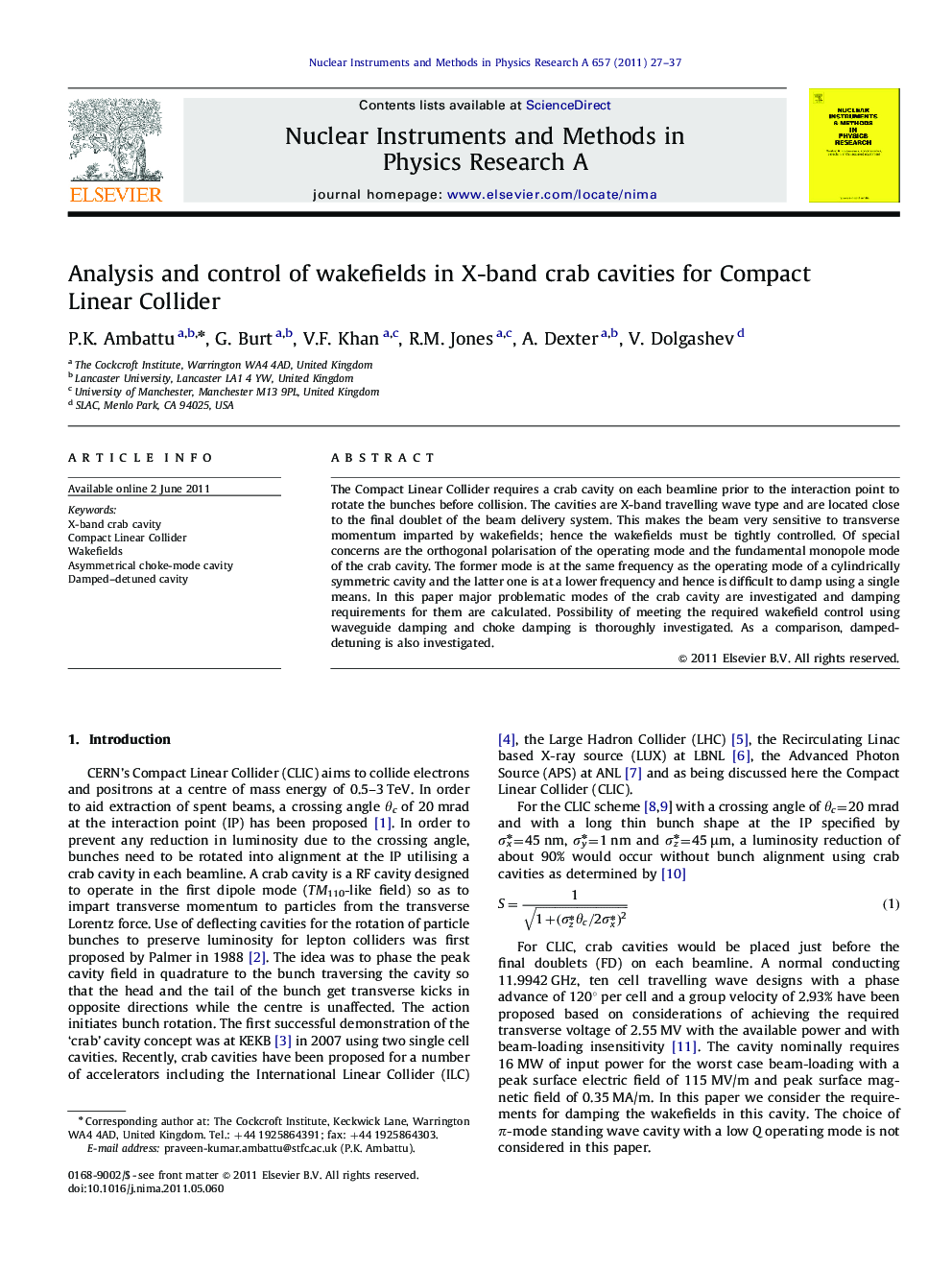| Article ID | Journal | Published Year | Pages | File Type |
|---|---|---|---|---|
| 1824526 | Nuclear Instruments and Methods in Physics Research Section A: Accelerators, Spectrometers, Detectors and Associated Equipment | 2011 | 11 Pages |
The Compact Linear Collider requires a crab cavity on each beamline prior to the interaction point to rotate the bunches before collision. The cavities are X-band travelling wave type and are located close to the final doublet of the beam delivery system. This makes the beam very sensitive to transverse momentum imparted by wakefields; hence the wakefields must be tightly controlled. Of special concerns are the orthogonal polarisation of the operating mode and the fundamental monopole mode of the crab cavity. The former mode is at the same frequency as the operating mode of a cylindrically symmetric cavity and the latter one is at a lower frequency and hence is difficult to damp using a single means. In this paper major problematic modes of the crab cavity are investigated and damping requirements for them are calculated. Possibility of meeting the required wakefield control using waveguide damping and choke damping is thoroughly investigated. As a comparison, damped-detuning is also investigated.
► Luminosity regain using crab cavities in the CLIC collider requires tight control of long range wakefields. ► Desired wakefield control is achieved by using lower order, same order and higher order mode dampers. ► Waveguide and choke dampers are shown to be useful candidates. ► Selectively shifting certain mode(s) that dominate the wakefield relaxes the damping requirements.
